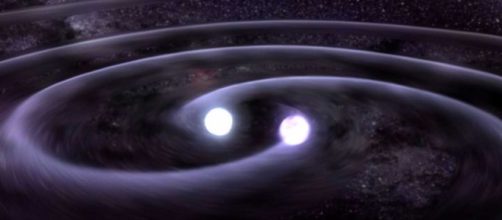In a new paper titled ‘’Gravitational Waves from Oscillons after Inflation’’ published in the journal Physical Review Letters, theoretical physicists have calculated a specific gravitational wave signal that could have happened just after the creation of the universe.
Gravitational waves
Gravitational waves were predicted by Albert Einstein more than one hundred years ago, and they were actually discovered recently. These gravitational waves are disturbances in the fabric of space-time itself that is caused by a moving object, just like a rock forming waves when hitting the surface of the river.
But in order for scientists to be able to detect these waves, they should be produced by an extremely massive object so that the wave is so intense to be observed by human-made technology.
Oscillons
At the very beginning of the universe, gravitational waves were produced everywhere with high frequencies, and when these waves ‘’met’’ each other they formed something like a ‘’standing wave in the ocean’’ that scientists call ‘’oscillons’’.
Now, using computer simulations and mathematical models, Professor Stefan Antusch and his team at the University of Basel have calculated the frequencies of a wide range of overlapping gravitational waves. These oscillons should have happened shortly after the big bang and they should have observable consequences that could be detected by present day detectors.
"Although the oscillons have long since ceased to exist, the gravitational waves they emitted are omnipresent -- and we can use them to look further into the past than ever before," said Professor Antusch.
Inflation and oscillons
At the very beginning, the universe started as a tiny region of space and started expanding, a process known as cosmic ‘’inflation’’, such inflation had caused massive fluctuations which caused the overlapping waves (oscillons) that occurred in the universe.
Experimental search
Using the math and simulations, Professor Antusch discovered that these oscillons formed a ‘’peak’’ that could be detected by experiment, a detection that was considered hard to get.
"We would not have thought before our calculations that oscillons could produce such a strong signal at a specific frequency," said Professor Antusch.

